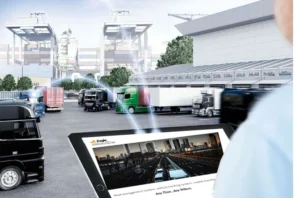
Are you tired of lacklustre employee engagement and motivation in your workplace? It’s time to level up with gamification! In this blog post, we’ll explore how using a gamification platform can transform your company culture, boost productivity, and create a more engaged workforce. Get ready to game on and unlock the potential of your employees like never before!
Introduction to Gamification and its Benefits for Employee Training
In today’s fast-paced corporate world, employee training and development is crucial for the success of any organisation. However, traditional methods of training can often be mundane and fail to engage employees, resulting in low retention rates. This is where gamification comes into play.
Gamification is the application of game elements and principles in non-game contexts, such as employee training programs. It involves using game mechanics like points, levels, challenges, leaderboards, and rewards to motivate and engage employees in learning activities.
The concept of gamification has gained popularity in recent years due to its ability to make learning more fun and interactive. By incorporating gaming elements into the training process, employees are not only motivated but also challenged to improve their skills continuously.
One of the main benefits of using a gamification platform for employee training is that it creates a sense of competition among employees. By introducing leaderboards or challenges where employees can compete against each other or themselves, it adds an element of excitement and encourages healthy competition within the workplace. This not only increases motivation but also drives productivity as employees strive to do better.
Moreover, gamification helps create an immersive learning experience by providing instant feedback on performance through points or badges earned during activities. This not only makes learning more engaging but also allows employees to track their progress easily and identify areas where they need improvement.
Another significant advantage of implementing a gamified approach in employee training is its ability to cater to different learning styles. Traditional classroom-style training may not be effective for all individuals as people have different ways of processing information. With gamified training modules that incorporate visuals, audio cues, and hands-on activities, it caters to various learning styles effectively.
Furthermore, gamification can help increase retention rates among employees as it creates a memorable experience that makes learning more enjoyable compared to traditional methods. Employees are more likely to retain information if they have had fun while learning it.
Gamification is a powerful tool that can revolutionise the way employee training is conducted. By incorporating game elements into the training process, it not only boosts employee engagement and motivation but also leads to more effective learning outcomes. With the advancements in technology, there are now various gamification platforms available for organisations to implement in their training programs. In the next section of this blog, we will discuss how to choose the right gamification platform for your organisation’s specific needs.
Understanding the Basics of a Gamification Platform
A gamification platform is a powerful tool that can be used to engage and motivate employees in the workplace. But before we delve into how this platform works, it’s important to understand the basics of what exactly a gamification platform is.
At its core, a gamification platform is a software or online application that incorporates game design elements and mechanics into non-game contexts such as employee training, performance tracking, and recognition programs. It takes inspiration from popular video games and applies those concepts to real-life scenarios in order to enhance user engagement and motivation.
One of the key components of a gamification platform is its use of points, badges, levels, challenges, and rewards. These are all familiar elements from video games that have been proven to tap into our natural desire for achievement and progress. By incorporating these elements into work-related tasks or activities, a gamification platform can transform mundane tasks into exciting challenges.
Another important aspect of a gamification platform is its use of competition and collaboration. Games often have leaderboards where players can see how they rank compared to others. This same concept can be applied in the workplace by creating leaderboards for completing tasks or reaching goals. Employees can compete against each other in friendly competitions while also collaborating with their teammates towards a common goal.
The data tracking capabilities of a gamification platform are also worth mentioning. With this technology, organisations are able to collect valuable data on employee behaviour patterns such as completion rates, engagement levels, areas of improvement etc. This data allows companies to gain insights on which areas need improvement and adjust their strategies accordingly.
Furthermore, most modern gamification platforms also come equipped with social features such as chat rooms or forums where employees can interact with each other outside of work-related tasks. This fosters team building and creates a sense of community within the organisation.
Understanding the basics of a gamification platform involves recognizing its use of game design elements like points and badges, fostering competition and collaboration, tracking data, and incorporating social features. By incorporating these elements into a gamification platform, organisations can create an engaging and motivating work environment for their employees. In the next section, we will explore how implementing a gamification platform in your workplace can have tangible benefits for your organisation.
Identifying Key Areas in Employee Training That Can Benefit from Gamification
Gamification is a powerful tool that has been gaining popularity in the corporate world for its ability to engage and motivate employees in training programs. By incorporating game elements, such as points, badges, leaderboards, and challenges into learning activities, employers can create a more stimulating and enjoyable training experience for their employees. However, not all areas of employee training may benefit equally from gamification. In this section, we will explore key areas where gamification can be most effective in enhancing the learning experience.
1. Onboarding and Orientation:
New hire onboarding can often feel overwhelming with an abundance of information to absorb in a short span of time. Gamifying this process can make it more engaging and memorable for new employees. By using game elements like quizzes or scavenger hunts to help them learn about the company culture, values, processes, and policies; organisations can ensure that new hires are better equipped to understand their roles and responsibilities.
2. Compliance Training:
Compliance training is essential but can be perceived as tedious by employees due to the sheer volume of information they need to retain. Through gamification techniques like storytelling or role-playing scenarios, companies can make compliance training more interactive and relatable for employees.
3. Soft Skills Development:
Soft skills such as communication, collaboration, leadership are critical for employee growth but are not easily acquired through traditional methods of training. Gamifying soft skills development through simulations or team-based challenges allows employees to practise these skills in a safe environment while receiving real-time feedback on their performance.
4. Product Knowledge Training:
For sales teams or customer-facing roles who need to stay updated on product knowledge constantly; traditional methods of presentations or lectures may not be sufficient in engaging them effectively. By turning product knowledge training into a fun competition where employees earn points by answering questions correctly or completing challenges related to product features; organisations can foster healthy competition among their teams while also ensuring better retention of information.
5. Language Learning:
Language learning can be a long and tedious process; however, with gamification techniques like vocabulary or speaking challenges, employees can develop language skills in an engaging and interactive way. Games that incorporate rewards for progress or completion of levels can also provide motivation for employees to continue learning.
Gamification has the potential to enhance various aspects of employee training by making it more engaging, motivating, and effective. By identifying key areas where gamification can be applied, organisations can leverage this powerful tool to create a positive and impactful learning experience for their employees.
Step-by-step Guide on How to Incorporate a Gamification Platform into Your Employee Training Program
Incorporating a gamification platform into your employee training program can bring numerous benefits to your organisation. It can increase employee engagement, motivation, and retention while also making the learning process more enjoyable and effective. However, implementing a gamification platform may seem daunting for those who are not familiar with it. That’s why we have put together this step-by-step guide to help you incorporate a gamification platform into your employee training program.
Step 1: Identify Your Goals and Objectives
The first step in incorporating a gamification platform is to clearly identify what you want to achieve through this initiative. Are you looking to improve knowledge retention? Do you want to increase participation in training programs? Are you aiming for better alignment between learning objectives and business goals? By setting specific goals and objectives, you will have a clear direction for designing your gamified training program.
Step 2: Choose the Right Gamification Platform
There are various gamification platforms available in the market, each with its own unique features and capabilities. It’s essential to choose one that aligns with your organisation’s needs and goals. Some factors to consider when selecting a platform include compatibility with existing systems, ease of use, customization options, analytics capabilities, and budget.
Step 3: Define Your Game Mechanics
Game mechanics are the rules that govern how players interact with the game or training program. They are crucial elements that make gamified experiences engaging and motivating. When designing your game mechanics, consider factors such as points systems, levels/progression, challenges/quests, rewards/prizes, feedback mechanisms (e.g., leaderboards), social elements (e.g., team competitions), among others.
Step 4: Create Relevant Content
Your content is at the core of any successful training program – even when it comes to gamified experiences. Ensure that your content is relevant to your employees’ job roles and aligns with their learning needs while being engaging and interactive. You can use a mix of different content types, such as videos, quizzes, simulations, and branching scenarios.
Step 5: Launch Your Gamified Training Program
Once you have defined your goals, chosen the right platform, designed your game mechanics, and created relevant content, it’s time to launch your gamified training program. Make sure to communicate the purpose and benefits of the program to your employees beforehand. Also, provide them with clear instructions on how to access and navigate the platform.
With these steps in mind, incorporating a gamification platform into your employee training program should be a smooth process. Remember to continuously monitor and evaluate its effectiveness and make necessary adjustments for continuous improvement. By engaging your employees through gamified experiences, you can create a fun learning environment that leads to improved performance and increased job satisfaction.
Conclusion
In today’s fast-paced and competitive work environment, it is crucial for companies to constantly engage and motivate their employees. By implementing a gamification platform, organisations can tap into the innate human desire for competition, achievement, and reward. This not only leads to increased productivity and performance but also creates a positive work culture where employees feel valued and motivated. With these 7 tips in mind, you are now equipped with the knowledge to effectively use gamification as a tool to engage and motivate your employees towards success. So let the games begin!






